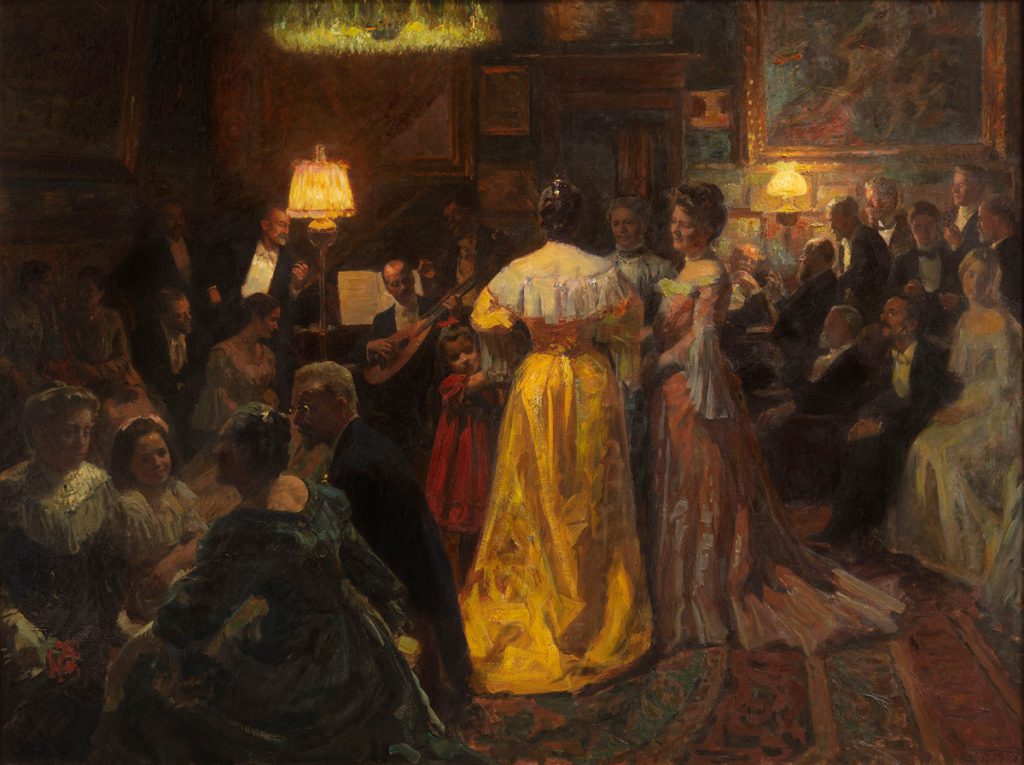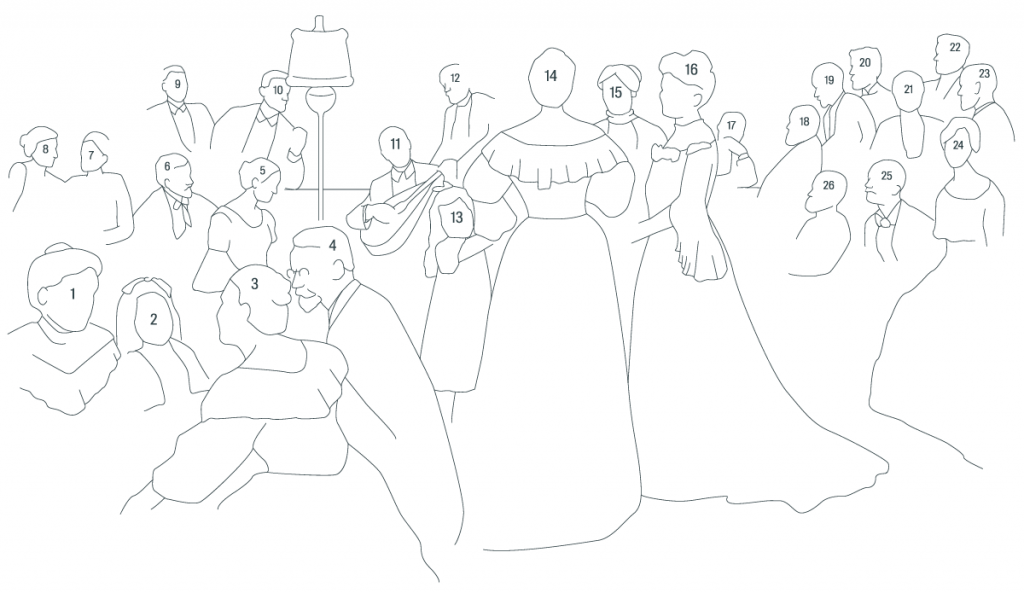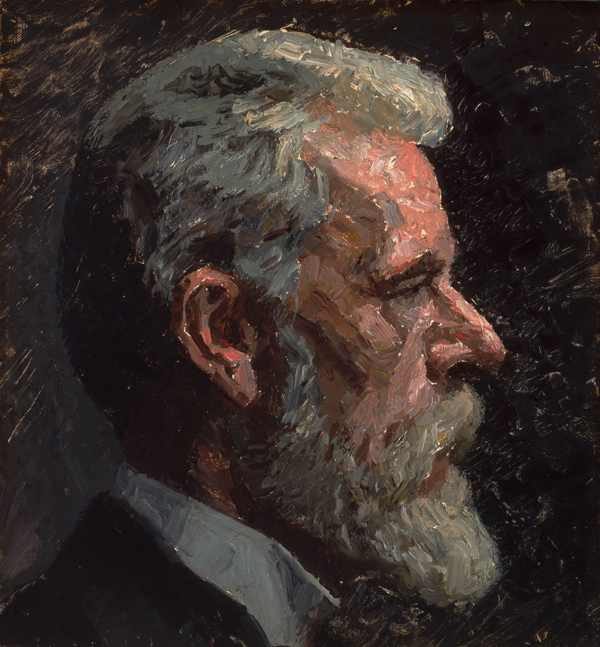An important work by the Skagen painter Laurits Tuxen (1853-1927) will now be included in the collection of the Art Museums of Skagen. The highly significant acquisition has only been possible thanks to generous donations from the Augustinus Fonden and the New Carlsberg Foundation.

The painting, A soirée in the studio, was created by Tuxen in 1905. It was sold into private collection the same year and has remained in the same family’s collection ever since.
– It is a highly important work by Laurits Tuxen, which fits very well in our collection of art by the Skagen painters. We have been aware of the painting’s existence for a long time and it has been high on our wish list of future acquisitions. I am immensely pleased that we now have had the opportunity to acquire the work, with the support of the two foundations, says Lisette Vind Ebbesen, director, Art Museums of Skagen.
The painting is a large group portrait of the participants in a social gathering, which took place in the artist’s villa in Copenhagen, where the Tuxen family resided from 1901 to 1909, and where Tuxen created many of his artworks.
The individuals on the painting are members of Tuxen’s family and figures from Danish cultural life counting several fellow artists from the Skagen artists’ colony including painters Peder Severin Krøyer, Anna Ancher, and Michael Ancher and other notable artists from the period. The attendees are all in full dress, but it is the women in their evening gowns, who are dominating the scene. The atmosphere – formal attire aside – seems intimate, informal and full of life.

In his autobiography from 1927, Tuxen writes about his work on the painting:
“The same year in April [1904] I started on a larger picture of family and friends gathered in my studio at Strandvejen, the painting was finished for the Spring Exhibition the following year.”
In his memoirs, the painter Aage Roose (1870-1970) – seen furthest to the right on Tuxen’s painting – recalls further details about the painting. Roose was then a student of Tuxen’s:
“We were sometimes invited home to Tuxen, when he hosted his large soirées. He owned two villas at Strandvejen – one, where he lived, and one, where he had his studio. I especially recall one such gathering […] We dined in the residential house and went over to the studio afterwards, where coffee was served, and where we spent the rest of the evening. [The painter Eduard] Saltoft and I were standing in a corner, enjoying the display of the elegantly dressed crowd, when Tuxen approaches us and says: “Listen – this is a great subject – something for you young people to paint – you should consider that”. We immediately rejected the idea, lacking all external possibilities to take on such a task. But Tuxen himself took to the idea, and it became his celebrated work A soirée in the studio.”

Laurits Tuxen was one of the earliest Skagen painters as he already in 1870 arrived in the fishing village in Northern Denmark. In the 1880s and 1890s he was absent from the resident artists’ colony. During those years Tuxen studied in Paris together with Peder Severin Krøyer, and he founded the Kunstnernes Frie Studieskoler in Copenhagen as a private alternative to the Royal Academy of fine Arts. Moreover, he worked on large commissions from the imperial, royal and princely courts of Europe. He returned to Skagen in 1901, where he took up residence in his own summer villa. He was a very productive artist and was among the founders of Skagens Museum in 1908.
The artwork is in good condition and will go on public display at Skagens Museum in January.
It was last on public view in 1990 at the Museum of National History at Frederiksborg Castle, Hillerød, Denmark.